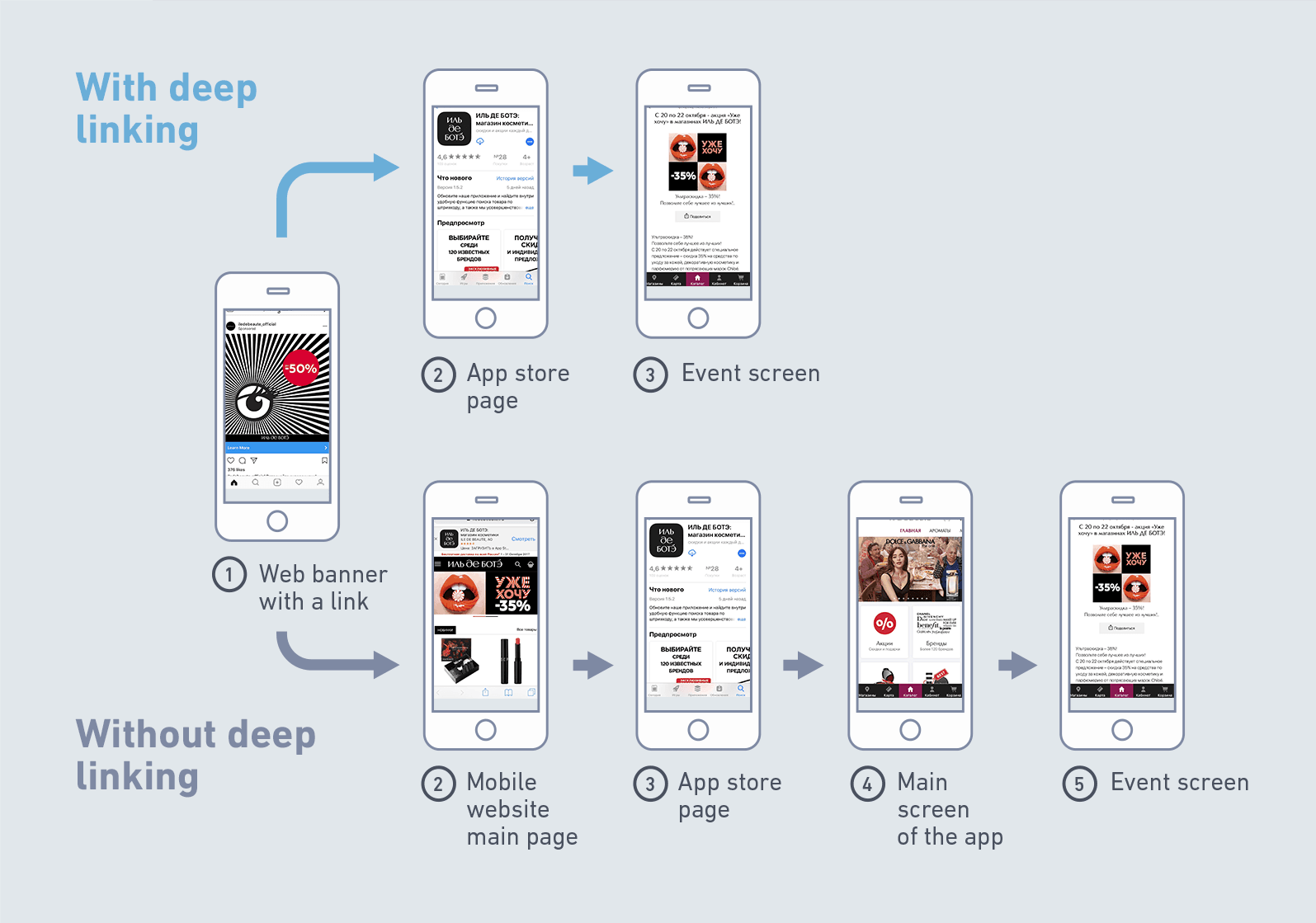Hey there, tech enthusiasts! Ever heard of deep hot link? If you're scratching your head right now, don't worry, you're not alone. Deep hot linking is a fascinating concept that dives deep into the world of digital content sharing. It’s like discovering a secret treasure map that leads you to a world where information flows in ways you never imagined. So, buckle up because we’re about to embark on an exciting journey into the realm of deep hot links.
Deep hot linking is more than just a tech term; it's a game-changer in how we access and share content online. Think about it this way: imagine finding a hidden door in a library that leads to an exclusive section filled with rare books. That’s what deep hot links do for the internet. They provide direct access to content that might otherwise be buried deep within websites, making it easier for users to find exactly what they need.
But hold up, before we dive deeper, it’s important to understand the implications of deep hot linking. While it can be incredibly useful, it also raises some serious questions about privacy and copyright. So, as we explore this topic, we’ll be looking at both the pros and cons, ensuring you’re well-informed before you decide to use or avoid deep hot links. Let’s get started!
Read also:Telegram For Teens Everything You Need To Know About Messaging For Ages 1317
What Exactly is a Deep Hot Link?
Alright, let’s break it down. A deep hot link is essentially a hyperlink that points directly to a specific piece of content within a website, rather than the homepage. It’s like skipping the main entrance and heading straight to the VIP lounge. This can be incredibly useful for users who want quick access to specific information, but it also has its downsides.
For instance, imagine you’re researching a topic and come across a blog post that perfectly answers your question. Instead of sending someone to the homepage and making them search for the post, you can give them a direct link to the exact page. That’s the power of deep hot links. But, as we’ll explore later, it’s not all sunshine and rainbows.
How Do Deep Hot Links Work?
So, how does this magic happen? Well, it’s all about URL structure. When a website is built, each page or piece of content is assigned a unique URL. A deep hot link simply uses this URL to direct users straight to the desired content. It’s like having a personal address for every room in a house.
However, the process isn’t always straightforward. Some websites have security measures in place to prevent deep hot linking, while others embrace it as a way to improve user experience. Understanding how these links work can help you navigate the web more efficiently and even enhance your own website’s accessibility.
Benefits of Using Deep Hot Links
Let’s talk about the perks. First and foremost, deep hot links make information more accessible. Users can find exactly what they’re looking for without having to sift through irrelevant content. This saves time and improves user satisfaction.
- Increased efficiency in content sharing
- Improved user experience
- Enhanced SEO for specific pages
Moreover, for website owners, deep hot links can boost SEO by directing traffic to specific pages, increasing their visibility in search engine results. It’s a win-win situation, right?
Read also:Helene Joy Partner Unveiling The Fascinating Journey Of Success And Collaboration
Potential Drawbacks of Deep Hot Links
But wait, there’s a flip side. One of the biggest concerns with deep hot linking is copyright infringement. By providing direct access to content, you might be bypassing the original creator’s intended path, which could lead to legal issues. Plus, it can undermine a website’s overall structure and navigation.
- Risk of copyright violations
- Potential loss of ad revenue for websites
- Disruption of intended user flow
It’s crucial to weigh these factors before diving headfirst into the world of deep hot links.
Legal Implications of Deep Hot Linking
Now, let’s get serious for a moment. The legal landscape surrounding deep hot linking is complex and varies from country to country. In some jurisdictions, it’s perfectly legal, while in others, it can land you in hot water.
For example, in the United States, courts have ruled that deep hot linking can be considered fair use in certain cases, but it all depends on the context. If you’re using a deep hot link to share someone else’s content without permission, you might be infringing on their rights. Always check the terms and conditions of the website you’re linking to and, if in doubt, seek legal advice.
Best Practices for Safe Deep Hot Linking
So, how can you use deep hot links responsibly? Here are a few tips:
- Always obtain permission from the content owner if possible
- Provide proper attribution to the original source
- Use deep hot links sparingly and only when necessary
By following these guidelines, you can enjoy the benefits of deep hot linking while minimizing the risks.
Deep Hot Link vs. Regular Link: What’s the Difference?
Let’s clear up any confusion. A regular link typically directs users to the homepage of a website, while a deep hot link takes them straight to a specific page or piece of content. It’s like the difference between giving someone the address of a building versus the exact room number.
This distinction is important because it affects how users interact with a website. Regular links encourage exploration, while deep hot links offer instant gratification. Both have their place, and the choice depends on your goals and the user’s needs.
When to Use Each Type of Link
Here’s a quick breakdown:
- Use regular links when you want users to explore a website
- Use deep hot links when you want to direct users to specific content
Understanding when to use each type of link can help you create a more effective and user-friendly website.
Tips for Creating Effective Deep Hot Links
Ready to try your hand at deep hot linking? Here are some tips to help you create effective links:
- Make sure the URL is accurate and up-to-date
- Test the link to ensure it works as intended
- Provide context for the link so users know what to expect
By following these tips, you can ensure that your deep hot links are not only functional but also user-friendly.
Common Misconceptions About Deep Hot Links
There are a few myths floating around about deep hot links that need to be debunked. For instance, some people believe that all deep hot linking is illegal, which isn’t true. As we discussed earlier, it depends on the context and the laws in your region.
Another misconception is that deep hot links always harm website traffic. While it’s true that they can bypass the homepage, they can also drive targeted traffic to specific pages, which can be beneficial for both users and website owners.
Setting the Record Straight
Here’s the bottom line: deep hot links are a powerful tool when used responsibly. They can enhance user experience, improve SEO, and even boost website traffic when done right. So, don’t be afraid to use them, just make sure you’re doing it ethically and legally.
Real-World Examples of Deep Hot Linking
To give you a better understanding, let’s look at some real-world examples of deep hot linking in action:
- News websites often use deep hot links to direct readers to specific articles
- E-commerce sites use them to take customers straight to product pages
- Bloggers use them to share specific posts with their audience
These examples show how deep hot links can be used effectively in various industries to improve user experience and drive traffic.
Learning from the Best
By studying how successful websites use deep hot links, you can gain valuable insights into best practices and potential pitfalls. It’s all about finding the right balance between accessibility and respect for copyright.
Conclusion: Is Deep Hot Linking Right for You?
Alright, we’ve covered a lot of ground. Deep hot linking is a powerful tool that can enhance user experience, improve SEO, and drive traffic to specific pages. However, it’s important to use it responsibly and ethically to avoid legal issues and respect copyright.
So, is deep hot linking right for you? That depends on your goals and the nature of your content. If you’re looking to make information more accessible and drive targeted traffic, it could be a great option. Just remember to follow best practices and always respect the rights of content creators.
Now, it’s your turn. Have you used deep hot links before? What was your experience? Leave a comment below and let’s start a conversation. And if you found this article helpful, don’t forget to share it with your friends and colleagues. Together, we can unlock the full potential of deep hot linking!
Table of Contents
- What Exactly is a Deep Hot Link?
- How Do Deep Hot Links Work?
- Benefits of Using Deep Hot Links
- Potential Drawbacks of Deep Hot Links
- Legal Implications of Deep Hot Linking
- Best Practices for Safe Deep Hot Linking
- Deep Hot Link vs. Regular Link: What’s the Difference?
- When to Use Each Type of Link
- Tips for Creating Effective Deep Hot Links
- Common Misconceptions About Deep Hot Links
- Real-World Examples of Deep Hot Linking
- Conclusion: Is Deep Hot Linking Right for You?



